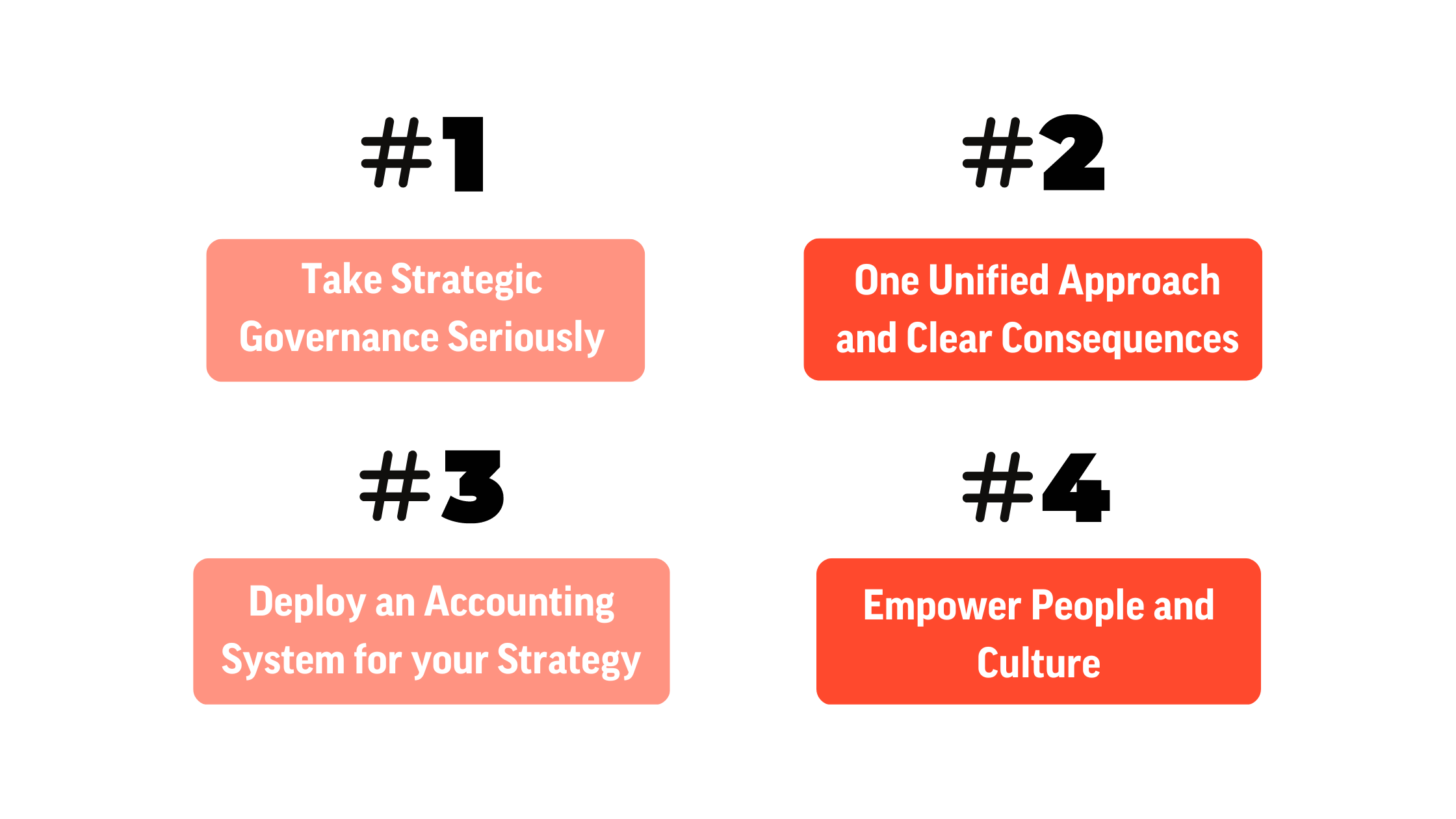Modernizing Strategic Leadership through technology

The approach to strategy implementation in the executive suite and boardrooms is old-fashioned, manual, and not tangible. The time has come to end years of stagnation in the executive suite and modernize strategic leadership. The fact is that every minute, three million dollars is wasted in failed strategy implementation. Many leaders are great at designing strategy — but in the end, accomplish very little.
Strategy gets lost in implementation. There is clearly something wrong with strategic leadership when three out of four leaders fail to fully implement their strategies. According to Professor Martin Reeves, Boston Consulting, 75% of large-scale change programs (transformations) fail to meet initial objectives. But why does no one seem to care, or know what to do about it? Why do executives accept a 75% failure rate?
The facts speak for themselves
Consider these numbers from Brightline Initiative’s research:
- 85% of all leadership teams spend less than one hour per month on strategy follow-up
- 63% say the lack of understanding by middle management is a barrier to implementation
- 95% of the typical workforce doesn’t understand their organizations’ strategy
And according to Fortune Magazine, nine out of ten organizations fail to implement their strategic leadership plans because:
- 60% of organizations don’t link strategy to budgeting
- 75% of organizations don’t link employee incentives to strategy
- 92% of organizations don’t track the Key Performance Indicators (KPIs) that measure their performance against the competition
- Strategy implementation is not a discipline in leadership education programs
The Bold Strategy Magazine explains these facts in-depth.
Leadership groups constantly complain about bad implementation. They say they are good at formulating strategy and enjoy the process very much, but after that no one seems to know what really happened (if anything happened at all).
Strategy implementation is old-fashioned. The discipline of strategic leadership management originated in the 1960s. Some of the most important influencers have been Drucker, Kotter, Chandler, Porter, Ansofff, and Bruce Henderson (founder of Boston Consulting). They were all experts in strategy models and design, and their influence is still strong; that’s probably why very little has changed in this field since the 1960s.
Combined with the fact that most organizations focus on the urgent rather than the important (“putting out fires”), it’s clear why strategic failure is so common.
If you have been part of strategy follow-up, think about how that process works in your organization. Most still call for a meeting to get status updates and an overview of progress. Or, a common alternative, there is no real monitoring at all besides a little spreadsheet or some jottings in the CEO’s notebook.
It’s time to stop just talking about strategy and follow up with no action. The excuses are endless, but strategic leadership must become the change they want to see.
The solution is today’s power of technology
There are no immediate, obvious consequences for failure of strategy implementation. It is accepted as a foregone conclusion. This is appalling! Why spend all that money to plan and then not give a damn about whether it’s implemented or not?
Employees will follow what you do, not what you say. That’s why you should become the change you want to see. Strategic leadership supported by intelligent applications is the only feasible way forward. And it all starts in the executive suite.
Digital transformation of strategy design and implementation gives leaders control over the outcome. Disrupt ineffective leadership practices now or your leadership will fail. It's not enough to change the rest of the organization. Start at the core of the organization — the leadership. Bottom line: strategy is not taken seriously because tracking methods, if used at all, are ineffective. Imagine if you had the same approach to your company’s finances. No clear data, no effective way to track your financial status—would that be considered serious strategic leadership? And how long would your organization last without effective oversight of its finances?
Advanced technology is now available that can handle extremely complicated sets of data and ensure integration with the current technology infrastructure of your business. This enables you to follow strategy implementation live. By pressing a button, you get a total overview of strategic performance in any part of your organization.
The Four Principles of Modernizing Strategy Implementation
Before applying these principles, you must help your leadership team identify and discard their outdated, ineffective habits and beliefs. Strategy design is also only the tip of the iceberg.
Therefore you must establish buy-in to digitalization, which may include quantum computing, machine learning, artificial intelligence, and blockchain to support strategic governance. This is the only way to achieve innovative, cutting-edge leadership.

Principle #1: Take Strategic Governance Seriously
Deploy the same rigor in governing your strategy as you do for your finances. Making implementation a top priority builds trust and engagement within the organization. Clear data provided by digital tools gives management instant access to progress and performance status.
With strategic governance, you can effectively delegate responsibility as well as instantly deal with the consequences of failing or succeeding. By granting necessary authority to specific team members, you enable them to drive their part of the strategy. It helps you narrow your focus to the critical elements rather than attempting to turn the whole ship around in a complex environment.
Principle #2: One Unified Approach and Clear Consequences
Create an infrastructure for your strategy that helps team members accomplish their assigned initiatives. A clear strategic framework (such as a chart of accounts) enables everyone in the organization to understand where they can contribute. This infrastructure also allows you to follow up on all strategic accountabilities.
Principle #3: Deploy an Accounting System for your Strategy
Successful implementation and follow- up require a clear set of data. Technological tools enable you to document everything you need to succeed.
Strategic accountability should work like an accounting system for strategy and be integrated into your ERP system. Powerful technology turns the dream of clear strategic accountability into reality and it' s all about getting things done in the most effective way to achieve the desired results.
Principle #4: Empower People and Culture
When your organization achieves cultural and strategic alignment, your employees help drive the strategy. By granting necessary authority to specific team members, you enable them to drive their part of the strategy. And of course, you'll gain top-down governance and bottom-up engagement. You can now focus on critical elements rather than attempt to turn the whole ship around in a complex environment.
Make strategy walk the talk!











